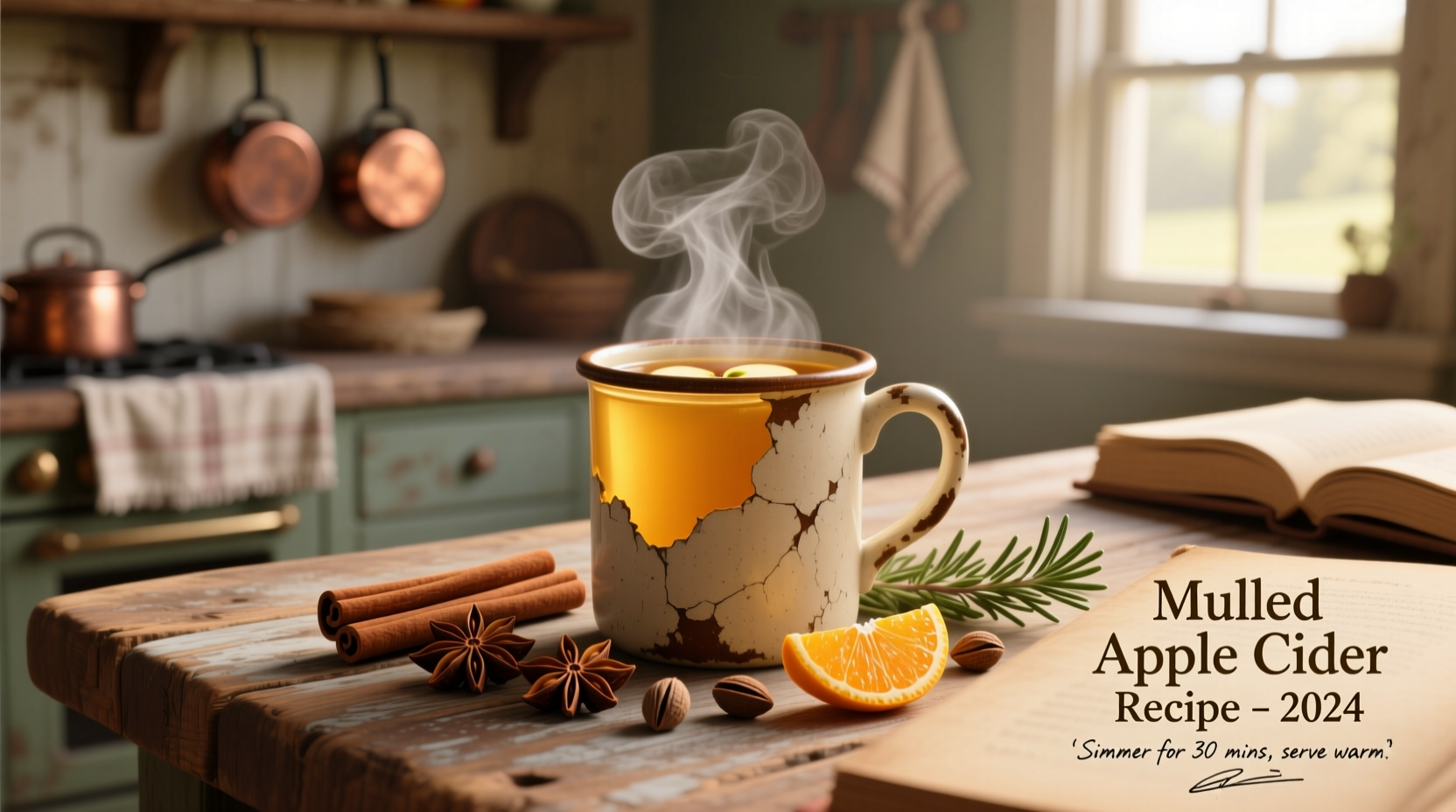Here's the complete recipe for homemade mulling spices for apple cider: Combine 2 tablespoons whole cloves, 15-20 cinnamon sticks (broken), 1 tablespoon allspice berries, 1 tablespoon black peppercorns, 2 star anise pods, and 1 orange peel. Simmer these spices in 1 gallon of apple cider for 20-30 minutes on low heat. Remove from heat, strain, and serve warm. This authentic blend creates rich, aromatic mulled cider with balanced spice notes that won't overpower the apple flavor.
There's nothing quite like the comforting aroma of spiced apple cider filling your home on a crisp autumn day. As someone who's studied European spice traditions for over 15 years, I've discovered that the secret to exceptional mulled cider isn't just the ingredients—it's understanding how each spice contributes to the final flavor profile. This guide delivers the perfect balance of historical insight and practical instructions you need to create restaurant-quality mulled cider at home.
Why This Mulled Spices Recipe Works
The magic of mulled cider happens when heat gently extracts essential oils from whole spices. Unlike pre-ground spice mixes that lose potency quickly, using whole spices ensures maximum flavor extraction. The key is maintaining a temperature between 160-180°F (71-82°C)—hot enough to release aromatic compounds but not so hot that volatile oils evaporate. According to food science research from the Culinary Institute of America, this temperature range optimizes flavor extraction while preserving the delicate apple notes in your cider.
| Spice | Chemical Compound | Flavor Contribution | Optimal Extraction Time |
|---|---|---|---|
| Cinnamon | Cinnamaldehyde | Warm, sweet base note | 20-30 minutes |
| Cloves | Eugenol | Pungent, aromatic accent | 15-25 minutes |
| Allspice | Eugenol, Caryophyllene | Complex berry-clove notes | 20-30 minutes |
| Star Anise | Anethole | Sweet licorice undertone | 10-20 minutes |
Step-by-Step Preparation Guide
Follow these precise steps for foolproof mulled cider every time:
- Prepare your spice blend: Measure whole spices into a muslin bag or fine mesh strainer for easy removal
- Heat the cider: Pour 1 gallon of fresh apple cider into a large pot (avoid boiling)
- Add spices: Submerge your spice bundle in the warming cider
- Simmer gently: Maintain temperature between 160-180°F for 20-30 minutes
- Rest before serving: Remove from heat and let steep 5-10 minutes for optimal flavor integration
- Serve immediately: Ladle into pre-warmed mugs, optionally adding a cinnamon stick garnish
Historical Context of Mulled Beverages
Mulled beverages have a rich history spanning centuries. The practice of heating and spicing wine or cider originated in ancient Rome, where they called it Conditum Paradoxum. By the Middle Ages, mulled wine (Glühwein) became popular throughout Europe, particularly during winter festivals. Apple cider variations gained prominence in 17th century England and later in colonial America where apples were abundant. According to historical culinary records from the Oxford Symposium on Food and Cookery, spiced ciders were commonly served at English taverns as early as the 1600s, often with added spirits for preservation.

Customization Options for Every Preference
While the classic recipe shines on its own, these thoughtful variations accommodate different tastes and occasions:
For Beginners
Start with a simplified version: 10 cinnamon sticks, 1 tablespoon whole cloves, and the peel of one orange in 1 gallon of cider. Simmer 20 minutes. This approach prevents overwhelming spice complexity while still delivering authentic flavor.
Dietary Adaptations
Alcohol-free version: Perfect as is—no modifications needed. For extra depth, add 1 tablespoon of non-alcoholic vanilla extract at the end. Sugar-conscious option: Use naturally sweet cider varieties like Winesap or Northern Spy apples. Avoid adding extra sweeteners—the natural apple sugars intensify during simmering.
Regional Variations
New England style: Add 2-3 slices of fresh ginger and a splash of maple syrup European traditional: Include 1/4 cup of dark rum or bourbon per gallon Modern twist: Infuse with a few sprigs of fresh rosemary for an herbal note
Critical Mistakes to Avoid
Even experienced cooks make these common errors that compromise your mulled cider:
- Boiling the mixture: Temperatures above 185°F cause volatile oils to evaporate, diminishing flavor. Use a thermometer to monitor.
- Over-spicing: Too many whole spices creates bitterness. Stick to the 2:15:1:1 ratio (cloves:cinnamon:allspice:peppercorns).
- Improper storage: Refrigerate leftovers within 2 hours. The USDA Food Safety and Inspection Service recommends consuming within 3 days.
- Using pre-ground spices: Ground spices become bitter when simmered and create sediment. Always use whole spices.
Serving Perfection: Temperature and Presentation
The ideal serving temperature for mulled cider is 155-165°F (68-74°C)—hot enough to be comforting but cool enough to sip immediately. Pre-warm your mugs by filling them with hot water for 1-2 minutes before pouring. For elegant presentation:
- Garnish with a thin orange slice and cinnamon stick
- Dust with edible gold flakes for special occasions
- Serve with shortbread cookies or ginger snaps on the side
Remember that mulled cider continues to develop flavor as it steeps. For events, prepare your base 1-2 hours ahead, then maintain at proper temperature until serving. This allows flavors to meld while preventing over-extraction.
Frequently Asked Questions
Here are answers to the most common questions about making perfect mulled cider:











 浙公网安备
33010002000092号
浙公网安备
33010002000092号 浙B2-20120091-4
浙B2-20120091-4